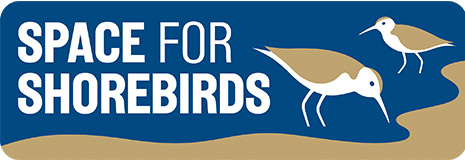Colour Ringed Ringed Plovers!
What a year it has been for nesting ringed plovers on the Northumberland coast this year! Beginning all the way back in April and finishing at the very end of August, this season has seen an increased number of pairs making nesting attempts at more sites along the coast than in previous years, some of which we have not seen ringed plover nesting there before.
As with all ground nesting birds, the ringed plovers have had to face a number of setbacks, including losing early nests to big high tides, predation and human and dog disturbance. Crows have been a particular problem this year and have been the cause of failure for many nests at both egg and chick stage. In an attempt to reduce this we made ‘igloos’ using chicken wire to place over the nests with doors large enough for the adult birds to fit though but small enough to prevent crows from reaching the eggs. This was hugely successful, and this strategy will be used at suitable sites in the coming years.
Beadnell has been a particular hotspot for ringed plover nesting activity again this year, the shingle beaches making it ideal nesting habitat and the extensive rocky shore providing ample food and hiding places for young chicks. 7 chicks fledged successfully from this site, making it our most successful site this year. A further 2 chicks fledged from Buston Links, bringing the total number of fledglings this year to 9. Although this is not as many as we had hoped for, especially with the increased number of nesting pairs, we are still incredibly happy that some pairs were successful and overcame the high predation pressure.

Now that the season is over, we are seeing lots of both adult and juvenile ringed plover passing though the county as they migrate further south for the non-breeding season. However a population will stay in Northumberland all year round, and we are curious to know whether the birds that have been nesting in Northumberland are resident birds. To help us learn more about their movements, we have trialled a colour ringing project this year, and working with a highly experienced bird ringer, we have ringed 6 of our 9 fledglings. The birds have a green ring on their left tibia (upper leg) and a white ring on their left tarsus (lower leg) with a black 3-letter code.

Pictured above is UAH, a juvenile which fledged from Beadnell on 26th July and has been spotted in the area regularly over the past few months. If you are out birdwatching on the coast at you spot one of our ringed birds, please let us know when and where you saw the bird, even if you can’t make out the code it is still great to know their movements. The data we collect through ring sightings will help us to further understand what proportion of the nationally important non-breeding population makes up the nesting population and learn a bit more about how site-faithful the birds are. We hope to see UAH and its siblings back in Beadnell for a successful nesting season next year!
As always, we cannot talk about the nesting birds without saying a huge thank you to the incredible Coast Care volunteers who have helped us from the very start of the season by surveying the coast to look for nesting pairs on territory, helping us install nest protection areas and talking to members of the public on ‘chick watch’ duty. We couldn’t keep the birds safe without your help, and we are incredibly grateful for your dedication and support. Thank you to the landowners who have given us their continued support, and to everyone who has given the nesting birds the space they need to raise their chicks.

We look forward to doing it all again next year!


